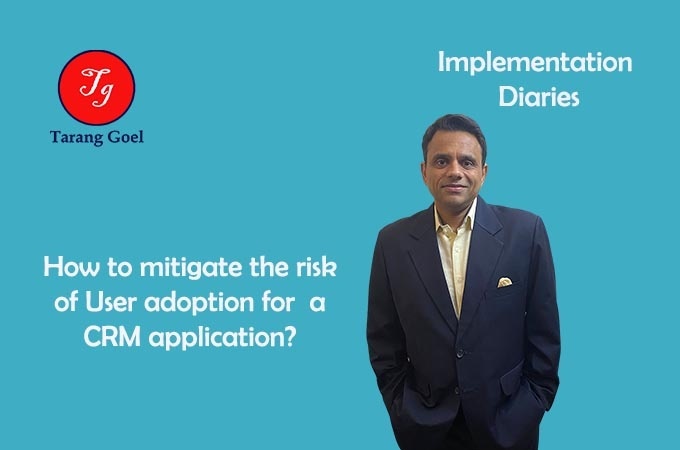Enterprise stakeholders often complaint about user adoption for CRM applications. There are many scenarios where a CRM application is built but the usage/adoption is nil.
This can be due to many reasons:
- Application is built in a silo. End user feedback is not incorporated
- Poor data quality– At the time of go-live it turns out recent data migrated in the new application is bad
- User interface is not taken care of – too many clicks to perform a task
- Due to many factors the legacy application is not cut off and users are carrying out processes in both applications
- Lack of training – Users are not trained on the application
- Lack of adequate dada analytics and reporting
Here is how we can mitigate the risk of user adoption for a CRM application and avoid negative ROI
Definition of Business Processes– It is most important to define immediate and medium run business processes to be implemented in the CRM application. There should be a roadmap of CRM implementation for at least 1 year. Only then immediate and medium run business processes can be defined. Some examples of business processes are – Account Management, Address Management, Contact Management, Lead, Opportunity, case, contract management and so on and so forth. In addition to this if a CRM application is being implemented in a specific vertical with a vertical specific process then those also need to be defined. For example, if Salesforce is implemented in a utility scenario, MoveIn-MoveOut is a process specific to utility industry. Many applications like Vlocity offer a standard template for these processes.
Data Modeling– On many implementations, data modeling is taken very casually, and not enough emphasis is given on the same. If current state data model is not mapped precisely to the future state, then it is a big risk for user adoption. Data model has to confirm to the in-scope business processes. Data model should be able to execute the business processes which will be implemented in the medium run as per the roadmap. For an example Salesforce offers a very versatile Account object for companies and person account for consumers. This account object can be modelled in many ways via record types & look ups. A lot of users have the notion that Account object is only meant for customers. That is not the case as Account object can be used to represent other partners in the eco system. I will get into the explanation and interpretation of Account object in a different blog but here it is important to note that data modeling is very important for user adoption.
Application searches– Users search information in many ways. Salesforce provides global search, then there are views for each object and sometime reports are also used to search information. In specific industry processes like utility, searches can be complicated and there can be many filters involved in a search. Searches can also be very dynamic. There can be multiple cross object searches. Now, if the users cannot search the information then that becomes a big risk for user adoption.
I feel that the triad of Business process, Data Modeling and Application searches is the foundation for user adoption. This can then be topped with User Interface, UX design and other elements.
I hope this must have given you a perspective of why implementations fail due to low user adoption and what are the critical factors to ensure adoption. These factors can easily be inbuilt during implementation with a call out on user adoption and this is how the risk can be mitigated.
Your likes, comments and share’s motivate me to keep writing.


0 Comments